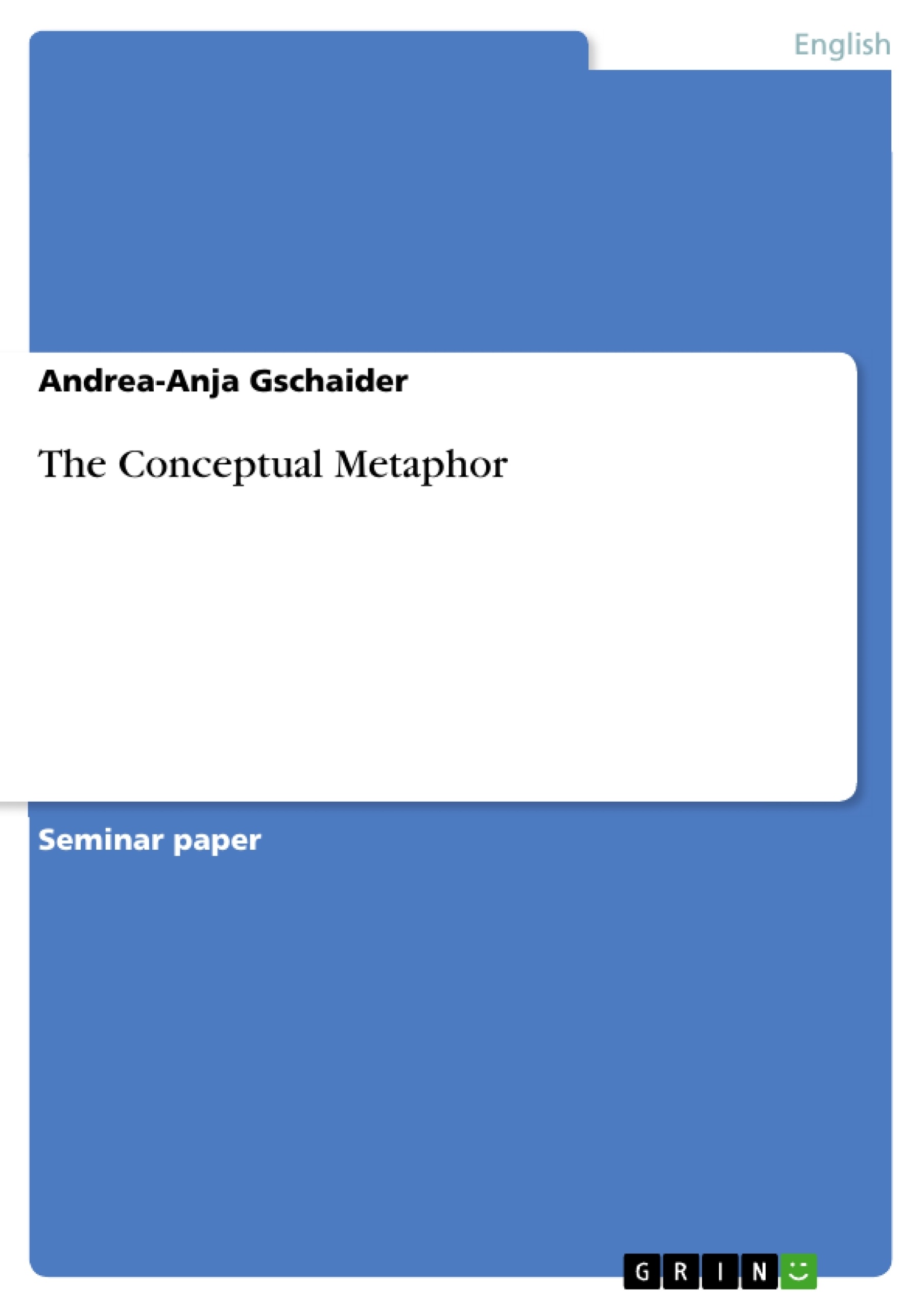Classical theorists since Aristotle have referred to metaphor as an instance of novel poetic language in which words likemother, night,andgoare not used in their normal everyday meaning. Metaphor was considered as a matter of language, not a matter of thought. It was assumed that in everyday language, there was no metaphor, and that metaphor used mechanisms which were not used in conventional language. This theory was taken as a definition. The wordmetaphorwas defined as a linguistic expression in which one or more words for a concept are used outside of the conventional meaning to express a similar concept. From a linguistic point of view, one has to ask what these generalizations governing the linguistic expression are. Trying to answer this question, the classical theory turns out to be false: the generalizations are not in language, but in thought; they can be seen as general mappings across conceptual domains. These conceptual mappings do not only apply to poetic expressions but also in everyday language. As a result, metaphor is a central aspect of ordinary language semantics. Everyday metaphor consists of a large number of cross-domain mappings which are used in novel metaphor. So when studying literary metaphor, it is an extension of the study of everyday metaphor. This paper will also show that the idea of metaphor is not limited to linguistics, but also concerns many areas of life and how we understand the world.
Inhaltsverzeichnis (Table of Contents)
- Introduction
- Few sketches of traditional definitions of metaphor
- Aristotle
- Augustinus
- Empirism
- Neo-Positivism
- Ivor Armstrong Richards
- Max Black
- Nelson Goodman
- George Lakoff
- Lakoff's Criticism of Traditional Views on Metaphor
- The six fundamental positions
- Semantic Autonomy
- Metaphors are not unique
- "Dead" Metaphor
- Mapping
- "The Linguistic-expression-only-Position"
- Every Aspect of Language is Metaphorical
- Conclusion
- The six fundamental positions
- The Embodied Mind
- The Embodied Mind in Mathematics
- Numbers - just a metaphor
- The Embodied Mind in Mathematics
- Metaphors in Politics
- Conclusion
Zielsetzung und Themenschwerpunkte (Objectives and Key Themes)
This paper aims to challenge the traditional view of metaphor as a purely linguistic phenomenon and demonstrate its central role in everyday thought and language. It explores how metaphor, far from being a mere decorative device, serves as a fundamental building block of human understanding.
- The evolution of the concept of metaphor from classical theories to contemporary perspectives
- The critique of traditional definitions of metaphor, particularly those that limit it to language
- The central role of metaphor in everyday language semantics and its extension to literary metaphor
- The impact of the concept of the embodied mind on our understanding of metaphor
- The application of metaphor in diverse domains, including politics and mathematics
Zusammenfassung der Kapitel (Chapter Summaries)
- Introduction: This chapter introduces the traditional view of metaphor as a linguistic device and sets the stage for challenging this perspective. It highlights the role of metaphor in everyday language and its significance beyond poetic expression.
- Few sketches of traditional definitions of metaphor: This chapter presents a historical overview of various perspectives on metaphor, starting with Aristotle and tracing its development through different philosophical schools. It includes key figures like Augustinus, the Empiricists, Neo-Positivists, Ivor Armstrong Richards, Max Black, Nelson Goodman, and George Lakoff.
- Lakoff's Criticism of Traditional Views on Metaphor: This chapter focuses on George Lakoff's influential critique of traditional views on metaphor. It examines his six fundamental positions, which highlight the limitations of previous theories and emphasize the pervasiveness of metaphor in language and thought.
- The Embodied Mind: This chapter delves into the concept of the embodied mind and its implications for understanding metaphor. It explores how our physical experiences shape our conceptual understanding and how this embodied understanding plays a crucial role in metaphorical thought.
- The Embodied Mind in Mathematics: This chapter examines the role of metaphor in mathematics, challenging the traditional view of numbers as purely abstract entities. It explores how metaphors derived from our embodied experience contribute to our understanding of mathematical concepts.
- Metaphors in Politics: This chapter explores the use of metaphor in the political arena. It analyzes how political discourse relies heavily on metaphorical language to frame issues, persuade audiences, and shape public opinion.
Schlüsselwörter (Keywords)
Key terms and concepts explored in this work include: metaphor, conceptual metaphor, embodied mind, traditional definitions, linguistic expression, everyday language, semantics, poetic language, classical theory, Aristoteles, Augustinus, Empiricism, Neo-Positivism, Ivor Armstrong Richards, Max Black, Nelson Goodman, George Lakoff, mapping, semantic autonomy, politics, mathematics.
- Citation du texte
- Andrea-Anja Gschaider (Auteur), 2002, The Conceptual Metaphor, Munich, GRIN Verlag, https://www.grin.com/document/57426



